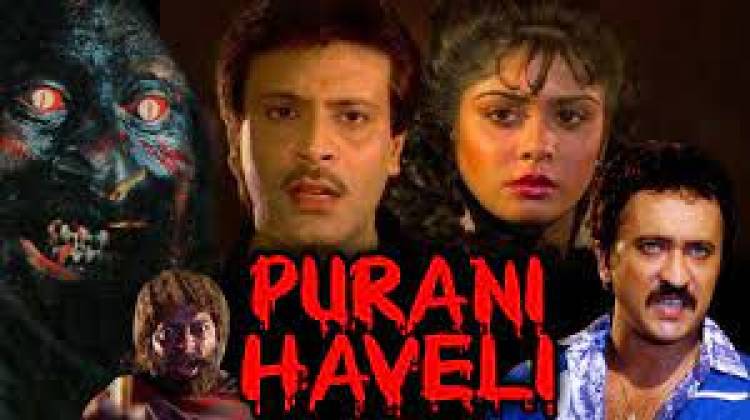From Ramsay Brothers to Ripped Realities: The Evolution of Horror in Indian Cinema

Introduction:
Horror has been a genre that has both fascinated and terrified audiences for decades. In Indian cinema, the journey of horror movies has been a rollercoaster ride, reflecting changes in society, technology, and storytelling. From the spine-chilling classics of the Ramsay Brothers to the cutting-edge horror narratives of today, the evolution of horror in Indian movies is a remarkable tale of transformation and innovation. Let's take a deep dive into this thrilling journey.
The Ramsay Brothers Era:
The Ramsay Brothers, a name synonymous with Indian horror, reigned supreme during the 1970s and 1980s. Their unique blend of supernatural elements, gore, and a hint of eroticism brought a fresh wave of horror to Indian cinema. Movies like "Purani Haveli" (1989) and "Veerana" (1988) became cult classics. The horror in these films was often campy, relying on practical effects and makeup to terrify audiences. Ghosts, witches, and haunted mansions were staples of the Ramsay Brothers' films.
While these films may seem dated by today's standards, they were groundbreaking at the time and set the stage for future developments in Indian horror cinema. They tapped into traditional Indian superstitions and folklore, which resonated with a predominantly rural audience.
The 2000s: A New Dawn for Indian Horror:
The 2000s marked a turning point in Indian horror cinema. Filmmakers started experimenting with different sub-genres, exploring psychological horror, supernatural thrillers, and found-footage horror. Movies like "Bhoot" (2003) and "Darna Mana Hai" (2003) introduced fresh storytelling and innovative techniques. "Bhoot" delved into psychological horror, relying on atmospheric tension and a strong script rather than supernatural entities.
"Darna Mana Hai" was a unique anthology film that experimented with storytelling, blending elements of folklore and modern horror. These movies signified a shift from traditional Ramsay-style horror to more nuanced and sophisticated storytelling.
The Rise of Contemporary Horror:
Today's Indian horror movies have come a long way from their predecessors. Modern filmmakers have embraced international horror trends, delivering spine-tingling narratives that keep audiences at the edge of their seats. The use of advanced visual effects and state-of-the-art technology has elevated the genre to new heights. Films like "Pari" (2018), "Tumbbad" (2018), and "Stree" (2018) have redefined the genre.
"Pari" introduced audiences to the world of supernatural horror, seamlessly blending folklore with contemporary storytelling. "Tumbbad" brought a unique mix of mythology, fantasy, and horror, raising the bar for production quality and storytelling in Indian cinema. "Stree," on the other hand, employed humor and social commentary while delivering a genuinely eerie experience.
What Has Changed in Indian Horror:
-
Narrative Complexity: Indian horror films today focus on intricate narratives, character development, and underlying social messages. They are more than just about jump scares and eerie music.
-
Production Quality: The use of advanced technology has allowed for stunning visual effects, making the supernatural elements more convincing and immersive.
-
Experimentation: Indian horror cinema is now experimenting with various sub-genres like psychological horror, found-footage, and folklore-driven narratives.
-
Gender Roles: Modern horror movies often challenge traditional gender roles, with female protagonists taking center stage, as seen in "Pari" and "Stree."
-
Social Commentary: Contemporary horror films often incorporate social commentary, using horror as a vehicle to address pressing societal issues.
Conclusion:
The evolution of horror in Indian cinema from the Ramsay Brothers to today's filmmakers is a testament to the industry's adaptability and innovation. The genre has moved beyond its campy origins, embracing a wide array of sub-genres and fresh storytelling techniques. With the advent of advanced technology and a growing pool of talented filmmakers, Indian horror is set to continue its captivating journey, delivering spine-tingling thrills and thought-provoking narratives to audiences both in India and around the world

 admin
admin 























Comments (0)
Facebook Comments